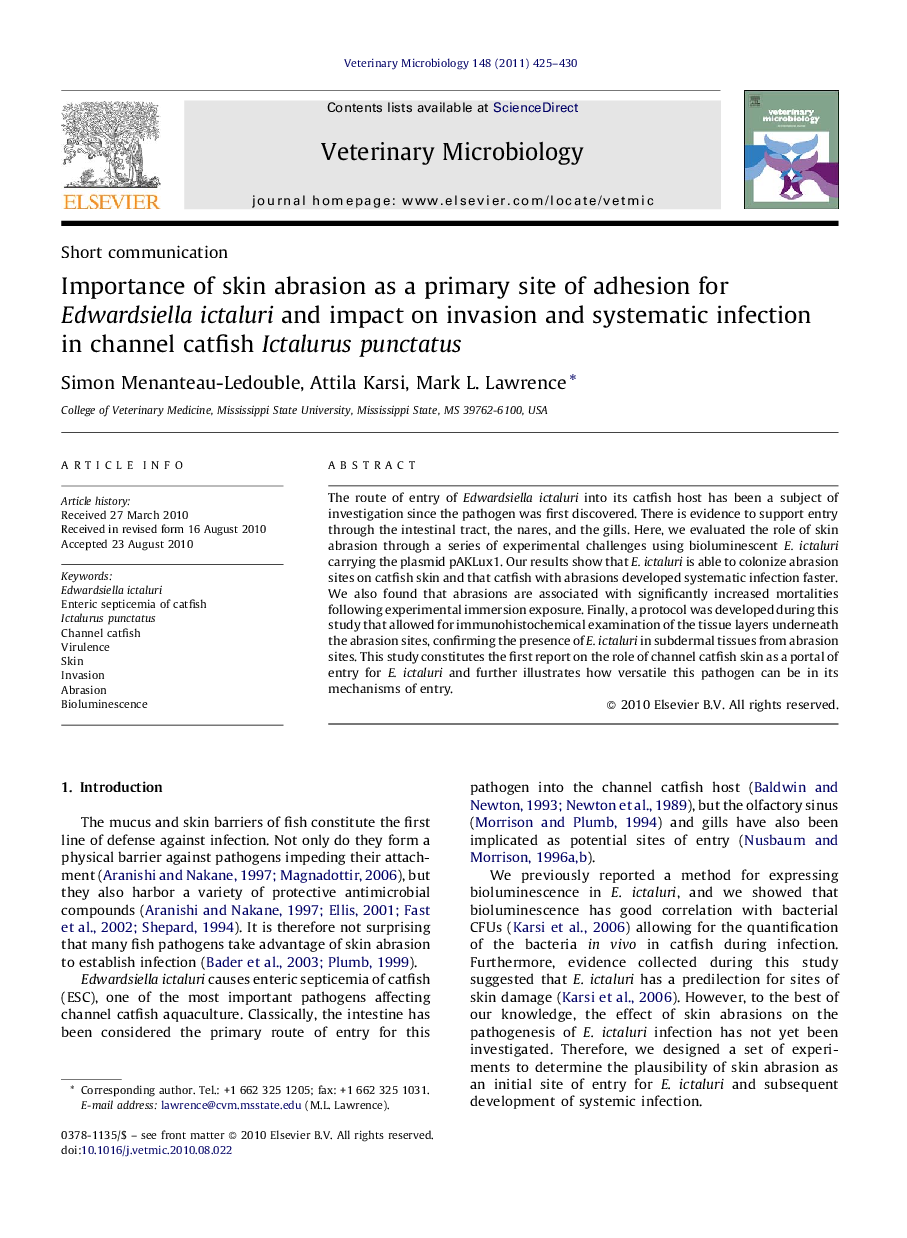| Article ID | Journal | Published Year | Pages | File Type |
|---|---|---|---|---|
| 2467731 | Veterinary Microbiology | 2011 | 6 Pages |
The route of entry of Edwardsiella ictaluri into its catfish host has been a subject of investigation since the pathogen was first discovered. There is evidence to support entry through the intestinal tract, the nares, and the gills. Here, we evaluated the role of skin abrasion through a series of experimental challenges using bioluminescent E. ictaluri carrying the plasmid pAKLux1. Our results show that E. ictaluri is able to colonize abrasion sites on catfish skin and that catfish with abrasions developed systematic infection faster. We also found that abrasions are associated with significantly increased mortalities following experimental immersion exposure. Finally, a protocol was developed during this study that allowed for immunohistochemical examination of the tissue layers underneath the abrasion sites, confirming the presence of E. ictaluri in subdermal tissues from abrasion sites. This study constitutes the first report on the role of channel catfish skin as a portal of entry for E. ictaluri and further illustrates how versatile this pathogen can be in its mechanisms of entry.
